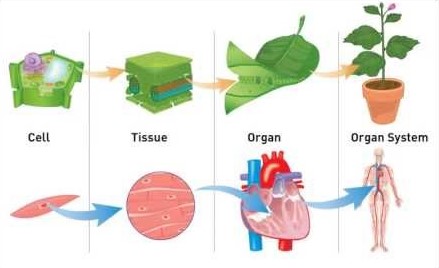Cell Structure And Functions - Class 8 Biology - Extra Questions
when you will suppose that the cell is dead?
What is cell?
State the difference between unicellular and multicellular organisms.
What is the average cell cycle span for a mammalian cell?
Well organised nucleus with a nuclear membrane is a characteristic feature of __________ cells.
The fluid material filling the empty space of the cell is __________.
The organisms whose cells normally contain a well-organized nucleus are called ______________.
Nucleus is generally spherical and located in the ____of the cell.
Explain "cells are the basic structural units of living organisms".
Make a comparison and write down ways in which plant cells are different from animal cells.
Which part of the cell contains organelles?
How could you appreciate function of tiny cell in a large body of an organism.
Which part of the cell contains cell organelles?
What is the difference between unicellular and multi-cellular organisms in organisation of their cells?
Cells are the ------ and ------ units of life.
Distinguish a prokaryotic cell from a eukaryotic cell.
Very short answer type.
Enumerate two differences between plant and animal cells.
Differentiate between Prokaryotic and eukaryotic cell
List any six features found both in plant and animal cells.
Why are the cells generally of a small size?
Justify the statement: Cell is the basic unit of life
The smallest living part of an organism is ________.
Define structure and function of a cell.
Who coined the term 'cell'?
Complete the following table by putting Yes or No :
S.No. Part Plant Cell Animal Cell 1. Cell membrane 2. Cell wall 3. Nucleus 4. Nuclear membrane 5. Cytoplasm 6. Plastids 7. Vacuole
| S.No. | Part | Plant Cell | Animal Cell |
| 1. | Cell membrane | ||
| 2. | Cell wall | ||
| 3. | Nucleus | ||
| 4. | Nuclear membrane | ||
| 5. | Cytoplasm | ||
| 6. | Plastids | ||
| 7. | Vacuole |
A student examined two different groups of cells and made the following observation.
| Trait | Cell 1 | Cell 2 |
| Cell wall Ribosomes Nucleus Ability to photosynthesize Cell respiration | Present Present Absent Present Present | Present Present Present Absent Present |
All living organisms are made up of ___
Where are the Cell organelles found?
Cell: The unit of life
State the difference between Cytoplasm and protoplasm.
In which form is oxygen transported to the cells in our body?
Name two unicellular organisms.
Largest cell in female body?
What are the prokaryotic and eukaryotic ? Given example.
Give reasons for the following.
The cell is called the structural and functional unit of life.
Describe the figure.

Match the terms given in column I with their functions given in column II and fill the blanks given below the table:
| column I | column II | ||
| A) | Chloroplast | i) | Carries hereditary characters |
| B) | Cell membrane | ii) | Controls the activities of cells |
| C) | Nucleus | iii) | Site of photosynthesis |
| D) | Chromosome | iv) | Controls the movement of materials into and out of cells. |
What type of division takes place in somatic cells?
Who am I?I have a nucleus and membrane-bound cell organelles.
What are unicellular and multicelluiar organisms? Give example.
In a cell, where are the genes located?
What are the differences between plant and animal cells?
Why is the cell called the structural and functional unit of life?
The size of the cells of an organism has no relation with the size of its body. Do you agree? Give reason for your answer.
Classify the following terms into cells, tissues and organs and write in the tabular column given below.
RBC, WBC, Nerve cell, blood, muscle, blood vessels, brain, heart, hand
| Cell | Tissue | Organ |